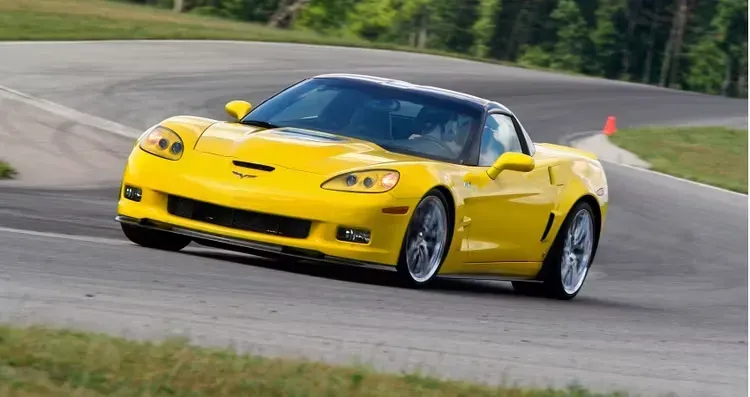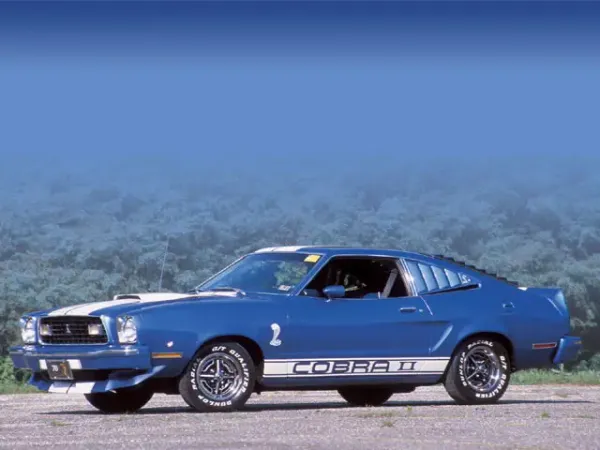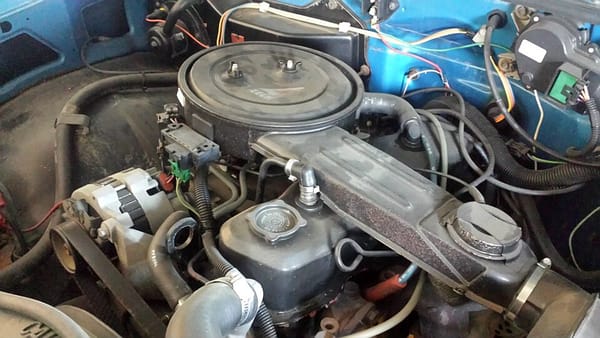5 Chevrolet Engines You'll Find in a Junkyard (5 That Are Beast Mode)

Of course, Chevy’s big block engines are the stuff of legend, but we can’t forget—in their day, some of their smaller engines were downright terrible, too.

We all know Chevrolet — a stalwart of our country’s motoring past and present, producing some of today’s most powerful and reliable engines.
Chevy’s engine lineup, from small displacement four cylinders to massive big block V8s with jaw dropping horsepower, are known for their performance and reliability and tunability in the automotive world.
Of course, as with any automotive company, Chevy hasn’t always knocked it out of the park.
But alongside its legendary powerhouses have been some of the most choked down, underpowered disappointments, particularly during the era of malaise when emission restrictions and gas shortages buffeted the industry.
But Chevy’s push occasionally failed to take at that time and some of those engines were better for the junkyard than the road.
So, let’s take a look at both ends of the spectrum: 5 Chevy engines that belong scrapped, 5 that will own anything they feel like.
Junkyard: 1979–1982 Chevrolet 267 4.4-Liter Small-Block V8

Chevy’s 267-cubic-inch V8 is one of its all time lows, having been built from 1979 to 1982.
First of all, if you were an automotive freak that lived in the ’80s, you’ll remember it was ridiculously underpowered — producing a meagre 120 horsepower and 215 lb ft of torque.
By 1982, somehow Chevy found a way to make it even worse, detuning it to under 100 horsepower.
ProfessCars noted that when this engine crawled from 0-60 mph, it did so at a painfully slow 13.2 seconds. Talk about a disappointment.

And to top it all off, the 4.4 liter V8 had a plethora of quality and reliability problems.
Many owners experienced engine failures at shockingly low mileage and, in nearly every case, the engine needed to be replaced entirely.
The bad news: Your engine would be impossible to find spare parts for because this motor didn’t share components with a single other small block.
And on top of that, it wasn’t fuel economy for a small block V8. Talk about a total dud.
9. Annihilate Anything: 2009 Chevrolet Corvette ZR1 Supercharged 6.2-liter LS9 V8

Finally, after the Z06, GM needed to do something outlandish with the C6 ZR1 Corvette.
On the other hand, it’s the supercharged 6.2-liter LS9 V8—a beast of an engine producing 638 horsepower and 604 lb-ft of torque.
That’s how you make a statement now.

Unlike its quaint predecessor, the supercharged LS9 debuted as GM’s most powerful production engine ever, and it didn’t disappoint.
Gearheads loved its impressive balance of raw power, but smooth drivability.
The LS9 still boasts a twin-rotor Eaton R2300 supercharger as its heart and is still setting the performance bar that others can only admire.
8. Junkyard: 1980-2005 Chevrolet 3.4-Liter (3400) V6

Over the years the 3.4–liter V6, a member of the 60–degree V6 family produced from 1980 to 2005, received lots of tweaks.
However, this engine had not been designed well.
There was one particular issue, however, that was a scourge more than any other, causing countless engine failures and causing the owners to become frustrated.

A well known cooling system issue on cars running the third generation 3.4 litre V6 could quickly cause the car to overheat if left unkempt. The culprit?
Then there’s DexCool, Chevy’s supercoolant, which proved to be our eternally foul-mouthed meal ticket as far as component eating is concerned, particularly with the intake manifold gasket.
7. Annihilate Anything: 2023 Chevrolet Z06 5.5-liter Naturally Aspirated LT6 V8

Purists will scoff at the 5.5 liter naturally aspirated LT6 V8, but GM is sticking to its guns and says the Gemini is a small block, and warrants its spot in the family due to 4.400 inch bore spacing.
For Corvette standards, a 5.5liter is a fairly compact engine now, just with more punch.

The purists might scoff at the LT6 5.5 naturally aspirated V8, but GM stands by its decision to give the Gemini its rightful place in the small block family thanks to that signature 4.400 bore spacing.
A 5.5 liter engine is still small by Corvette standards, just with a truckload of power.
6. Junkyard: The 2.5-Liter “Iron Duke” Engine

No doubt the 2.5 'Iron Duke' engine was tough, but it was also of its time, consumed by emissions restrictions and fuel economy thinking.
Sure it wasn’t built for performance, but Chevy went ahead and slapped it into some of their performance nameplates in the ’80s and ’90s.
Case in point: You may have read his blog dressed as a variant of the 1982 'Iron Duke' Camaro (the internet loves to call this one of the worst cars ever built).

In relation, the ultimate nerve that GM had was going to put a 90 horsepower engine into their legendary sports car.
It crawled from 0 to 60 mph in nearly 20 seconds, and that's a buzzkill if ever I've heard one.
5. Annihilate Anything: Chevrolet Performance ZZ572/720R Deluxe Crate Engine

Alongside small and big block engines, Chevrolet does offer the big block ZZ 572/720R crate engine that is quite simply the biggest, baddest Chevy big block on the market today.
This beast was built to rule the drag strip, the monster shoots out 720 horsepower and 685 lb-ft of torque.
GM engineers took the popular ZZ572/620 and turned up the heat with a hotter camshaft, 12:Aluminum Bowtie heads, 1 compression pistons.
The ZZ572/720R Deluxe Crate engine has been dubbed the king of Rat engines; it can get your ride down the drag strip in under 9 seconds.
That’s officially some serious power.
4. Junkyard: 1971-1977 Chevrolet 2300 Inline-Four

Built from 1971 to 1977 Chevrolet cranked out this 2.3-liter, 139 cu in inline four for use in its Chevy Monza and Vega.
Yes, it was anemic at 110 hp and 107 lb ft of torque, but the actual problem began when you rotated the key.
Overheating and such violent internal vibrations that could literally tear the engine apart was just one of this engine's reputations.
Talk about self-destruction.

They were so bad the engine would shake the carburetor loose and leak gas straight into the cylinders and onto the hot engine block.
The valve seals would crack, oil would seep in the cylinders and ruin the silica coating… all to make a worse problem.
It practically guaranteed overheating, along with the shredding of head gaskets.
Chevy didn’t do their case any favors: Cost cutting meant a tiny radiator and no coolant overflow tank, making a bad situation even worse.
3. Annihilate Anything: 2019 Chevrolet Corvette C7 ZR1 Supercharged 6.2-Liter LT5 Engine

In 2021, General Motors pulled the plug on the supercharged 6.2 liter LT5 engine and fans are scratching their head as to why.
Even so, it's the most powerful engine ever in a Chevy production car, and it's a jaw dropper: 755 horsepower and 715 lb-ft of torque.
The LT5 is built on the foundation of the LT4 and LT9, with a larger supercharger, beefed up crankshaft, bigger throttle body and a new dual injection system.
A true powerhouse, that went out too soon.

Sadly, with a price tag of $19,995, it’s not too hard to believe sales were sluggish enough for GM to pull the plug on the LT5 engine.
It's still a gem, but it's exclusive to the 2019 C7 Corvette ZR1. When the LT5 goes away, the 670 hp LT6 becomes Chevy’s most powerful performance engine.
2. Junkyard: 1976-1992 Chevrolet 305 V8

The ’70s oil embargo is also responsible for snuffing out the Chevy 305 V8.
As gas prices shot higher, like other automakers, GM focused on efficiency not power. The result?
An engine that was never all that great with a performance, but stayed around until well into the early ’90s.
In any given year, it made anywhere between 160 and 230 horsepower, hardly exciting figures for a V8.

As an efficient, reliable mill, the 305 V8 found a home under the hoods of a wide variety of Chevy trucks and SUVs (Blazer, C10 for starters and a lot of trucks and vans) and cars (Nova, Camaro.)
It didn’t end there; GM spread the 2.5L through its entire lineup, powering Pontiac Firebird, Grand Prix, GMC vans, and trucks.
- Annihilate Anything: Chevrolet Performance ZZ632/1000 Big-Block Crate Engine

Anybody who has built a big-inch crate engine knows Chevrolet truly nailed the formula, and their newest creation, the 632-cubic inch ZZ632, is a beast.
This monster tops Chevy’s crate engine lineup, as it cranks out a jaw dropping 1,004 horsepower and 876 lb-ft of torque using 93 octane pump gas.
America, it is official; this is the most powerful crate engine Chevy has ever built.
Crazy, right? What’s even crazier is that without turbos or nitrous, it achieves such numbers.
Perhaps its standout feature is the RS X symmetrical port cylinder heads which are intended to give every cylinder as close as possible to a run balance of power.
Of course, this 10.35 liter V8 masterpiece does not come cheap and will cost you a staggering $37,758.
For the power it delivers, definitely worth every penny.



